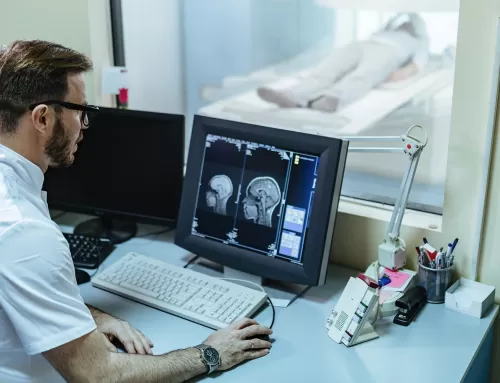Ultrasound technology, often called sonography, is a remarkable medical imaging technique that has transformed healthcare in numerous ways. This comprehensive and detail-oriented article will explore the fascinating world of ultrasound, its applications, and its significant impact on patient care. Concise Medico’s cutting-edge Ultrasound services ensure you have access to top-tier diagnostic solutions.
The Birth of Ultrasound
As we know it today, ultrasound was developed as a non-invasive and radiation-free imaging tool. It uses high-frequency sound waves to produce real-time images of the body’s interior. Unlike X-rays or CT scans, ultrasound imaging poses no known risks, making it incredibly safe for patients and healthcare providers.
The Science Behind Ultrasound
The core principle of ultrasound involves the transmission of high-frequency sound waves into the body. These sound waves bounce off different tissues and structures within the body and return as echoes. A handheld transducer sends and receives these sound waves while a computer processes them into clear, detailed images.
Medicinal Significance of Ultrasound Technology
Ultrasound technology holds immense medicinal importance, particularly in obstetrics and gynaecology. It enables real-time monitoring of foetal development during pregnancy, allowing expectant parents to witness the growth and well-being of their unborn child. Additionally, ultrasound’s application extends to cardiology, which plays a crucial role in diagnosing heart conditions by visualising the heart’s structure and blood flow.
In abdominal imaging, ultrasound aids in detecting conditions like gallstones and kidney stones, providing valuable diagnostic information without exposing patients to ionising radiation. Its non-invasive, safe, and versatile nature makes ultrasound an essential tool for healthcare professionals, enhancing patient care by providing quick, painless, and real-time imaging for various medical conditions.
Applications of Ultrasound Technology
Ultrasound technology has a wide range of applications across various medical specialities:
- Obstetrics and Gynecology: In obstetrics, ultrasound is commonly used to monitor foetal development during pregnancy. It allows expectant parents to see images of their baby in the womb and helps healthcare providers ensure the baby’s well-being.
- Cardiology: Cardiologists employ ultrasound to visualise the heart’s structure and monitor blood flow. This is known as echocardiography and is crucial in diagnosing heart conditions.
- Abdominal Imaging: Ultrasound is a valuable tool for examining the organs within the abdomen, including the liver, gallbladder, and kidneys. It aids in detecting conditions such as gallstones and kidney stones.
- Musculoskeletal Imaging: Orthopaedic specialists use ultrasound to assess soft tissue injuries, such as tendon and ligament damage. It helps guide injections for pain relief and treatment.
Advantages of Ultrasound Technology
The use of ultrasound offers several benefits in the medical field:
- Non-Invasive: Ultrasound is non-invasive, meaning it doesn’t require incisions or exposure to radiation.
- Real-Time Imaging: It provides real-time images, allowing healthcare professionals to observe movement and changes as they happen.
- Portability: Ultrasound machines come in various sizes, including portable units, making them versatile and accessible.
- Safe for All Ages: Ultrasound can be used on patients of all ages, from infants to the elderly.
Ultrasound technology has enhanced the accuracy of medical diagnoses and improved patient care in various ways. Its non-invasive nature, real-time imaging, and safety profile provide a more comfortable and efficient healthcare experience.
Final Thoughts
Ultrasound technology has become an indispensable medical tool, providing crucial insights and improving patient care. As technology advances, ultrasound’s role in healthcare is set to expand, ensuring that patients receive the best possible care and diagnostics.
Ready to experience the benefits of state-of-the-art Ultrasound services? Click here to discover how Concise Medico can provide top-quality diagnostic solutions for your healthcare needs.




